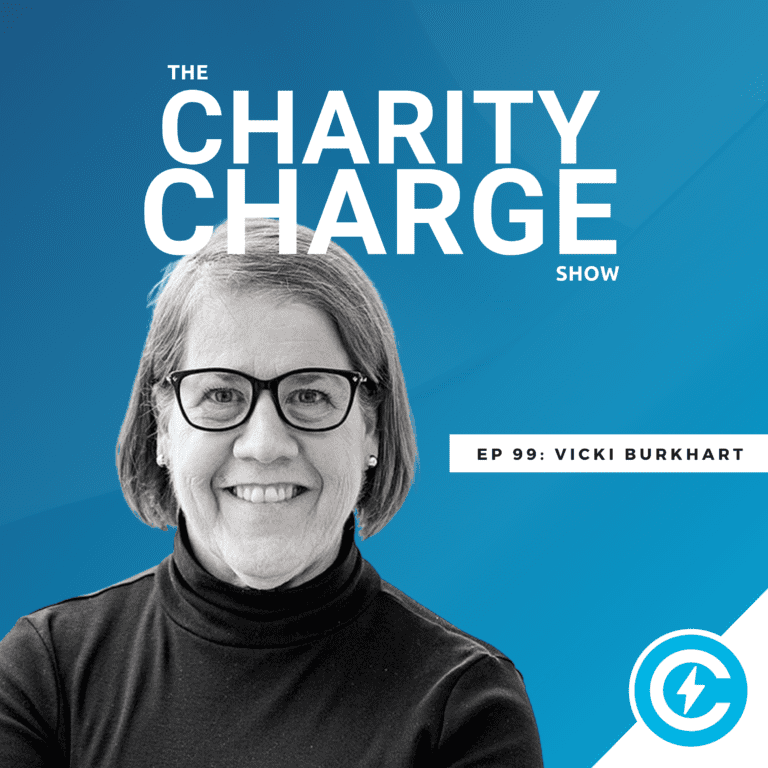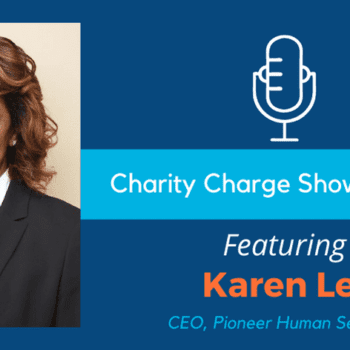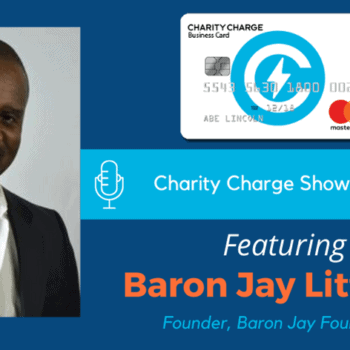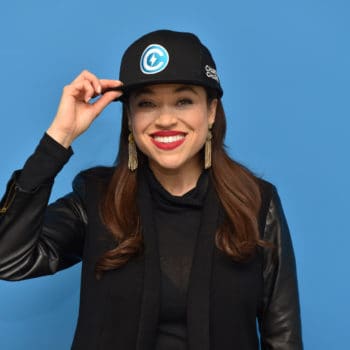In Episode 99 of the Charity Charge Show, Stephen talks to Vicki Burkhart, CEO of The More Than Giving Co., whose mission is to give nonprofits with visionary leaders and compelling missions an affordable, on-demand staffing solution to supplement the bandwidth and skillsets of their volunteer force.
Stephen and Vicki Burkhart talk about More Than Giving’s work with nonprofits to provide the staffing they need, the importance of a living strategic plan, and the four critical things for nonprofit success.
Vicki Burkhart is founder and CEO of the More Than Giving Company. She has 30+ years of experience in the nonprofit arena as an Executive Director, nonprofit executive and consultant.
After earning a B.A. and M.Ed. from Penn State, Vicki advanced to hold leadership positions in development and donor relations, including serving as the VP of Advancement at the MCP Hahnemann School of Medicine. At the same time, she was serving several nonprofits as their Executive Director.
Collectively, these roles gave her extensive, hands-on experience with major gift cultivation (including personally closing multimillion-dollar gifts), board development and strategic planning, membership development, organizational development, and volunteer management.
In 1999, Vicki founded More Than Giving with the goal of delivering innovative solutions to help more volunteer-driven nonprofits achieve sustainability and growth.

Through consulting and executive coaching, as well as a unique Nonprofit Virtual Assistant service, the company delivers an affordable, on-demand staffing solution to help nonprofits supplement the bandwidth and skillsets of their volunteer force.
Says Vicki, “It’s a joy, and feels like the realization of my professional dreams, that my colleagues and I have the opportunity to help so many unbelievably dedicated and passionate volunteer-driven organizations reach new levels of success.”
Vicki Burkhart on the four critical things for nonprofit success:
There are four things that I think are critical to a successful nonprofit:
- A strategic plan – It’s usually the first thing I ask for when I engage with a new client. All of the organizations that I lead, as an Executive Director have active strategic plans. By active I don’t mean strategic plans that you do and put on the shelf and look at you know once a year. I mean, strategic plans that actually navigate the direction and path for the nonprofit, where you make decisions based on your plan, you look at revenue generation and leadership succession based on your plan. The strategic plan is a document that I think no matter how large or small the nonprofit is, is critical to that success.
- Finding the right board – I intentionally use the word right because boards that I have worked with evolve, just like the nonprofit evolves. The founding board may be replaced by what I like to call the transition board a few years in, this transition board can then allow you to start separating operations from corporate responsibility. It defines the role of the board and the board’s committees a little bit more and that of what staff does. Then the transition board shifts as the organization matures and starts to move into a more corporate board. It’s important for nonprofit organizations to spend time finding the right people to sit on each of these boards. For the founders board looks very different than a corporate board.
- Maintaining and building capacity – It’s important that a nonprofit has the people and resources to support the growth of the organization. This gets back to, our paradigm shift in staffing and being able to have the right technology in the right infrastructure needed to support the growth of the organization.
- Internal support – With the right internal support your professionals and your volunteers can focus on the work that they need to do. That’s where you want someone who’s sitting on your board making visits to prospective donors and you don’t want them sitting in the office just doing light bookkeeping or sending out acknowledgement letters. Organizations really have to look at, if you get this much of volunteer time (which is a lot less than we used to get) how can that best be used? Where can you fill in with some additional support elsewhere?





